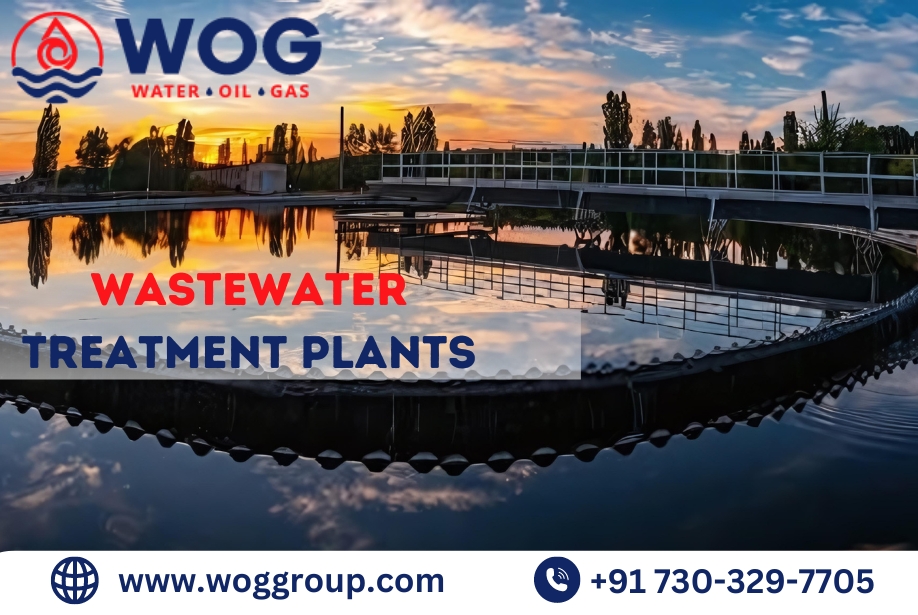Wastewater treatment plants play a crucial role in the health of our communities. As the population continues to expand and environmental concerns increase, these plants must therefore adopt new technologies to enhance wastewater treatment processes and be sustainable. Pay attention to the trends such as these that will revolutionize the industry. The use of modern filtration techniques as well as energy recovery techniques are contributing to growth and making creativity economical in the treatment of domestic wastewater.
Such new improvements contribute to increased treatment efficiency, save on water and minimize adverse impacts on the environment. Water that has been used for some purpose and that can cause pollution must be treated before it is discharged into the environment. To prevent pollution by industrial effluent, a wastewater treatment plant is installed. Wastewater treatment plants are essential because a lot of chemicals are produced by industries. Industrial areas will create more water with toxic and dangerous by-product wastes. Clean water has become too much so that we can afford to continue practising industrialization without care for the environment.
As per research, the global water and wastewater treatment market size was valued at USD 323.32 billion in 2023 and is projected to grow from USD 346.41 billion in 2024 to USD 617.81 billion by 2032, exhibiting a CAGR of 7.5% during the forecast period.
The need for advancements in wastewater treatment
Global population growth and urbanization enhance the need for adequate wastewater treatment plant. These factors demonstrate the need for sector improvements:
- Prevention: Pathogens and contaminants that threaten community health must be removed using advanced treatment procedures to prevent waterborne diseases.
- Pollution Prevention: Better wastewater treatment technologies limit pollutant discharge into waterways, conserving aquatic ecosystems and biodiversity.
- Climate Change Resilience: Increased flooding and extreme weather events can overwhelm existing systems, although improved treatment methods can help.
- Nutrient Recovery: Advanced systems can recover nitrogen and phosphate from wastewater, making fertilizers.
- Electricity Generation: Biogas from wastewater treatment can generate electricity, encouraging sustainability.
- Recycling: Treated wastewater can be safely reused for agricultural, industrial, and drinkable purposes to ensure a sustainable water supply in the face of escalating water scarcity.
Wastewater Treatment Plant Trends
Wastewater treatment plants are influenced by several trends:
1. Decentralized Treatments
- Local Solutions: Decentralized solutions allow small-scale treatment plants to operate autonomously, generally near wastewater sources.
- These methods can boost community resilience, especially in rural or underdeveloped locations where centralized facilities are unfeasible.
2. Sustainable Methods
- Methodologies that can be referred to as sustainable – Controlled maintenance of swollen bed wetlands and biological treatment pods is becoming common for stormwater control and water enhancement.
- Energy Accuracy: Manufacturing plants have resorted to using energy-efficient means of production to lower expenses and carbon output.
3. Smart Water Management
- IoT Integration: The Process of wastewater treatment and sensor controls which have analysis capability is integrated with IoT technology utilizing real-time data.
- Smart sensors make it possible to preempt things breakdown that leads to costly downtimes and maintenance of equipment.
New Wastewater Treatment Technologies
New technologies are upgrading the existing methods of weaponization.
-
Membrane bioreactors
- New Approach: They incorporated advanced Integrated membrane bioreactor (MBR) systems combining biological treatment of wastewater with membrane filtration for the production of high-quality treated effluent for reuse.
- Size Efficiency: These systems have small footprints and can handle a diverse range of influent characteristics.
-
Nutritional Recovery Technologies
- Struvite Precipitation method: Phosphorus recovery from wastewater helps to prevent water nutrient excess while creating eco-friendly fertilizer.
- Anaerobic Digestion: Changes Biowaste into Biogas through Anaerobic Digestion to obtain electricity making sludge disposal minimal.
3. Advanced Oxidations
- Chemical Treatment: AOPs break down organic pollutants including pharmaceuticals and personal care products that resist traditional treatment with intense oxidants.
- Improved Efficiency: These techniques remove micropollutants more efficiently, cleaning wastewater.
Various Industry Wastewater Treatment
Wastewater requirements of various sectors also differ hence treatment will also differ. Various common treatment methods primarily in various industries include:
- Pharmaceutical Industry: Gross effluents during the production activities of Pharmaceutical constituents containing residual drugs, chemicals, and organic matter. Physical-chemical techniques, which include coagulation, flocculation, sedimentation, complicated oxidation and membrane filtration techniques are employed to remove the pollutants.
- Food Industry: Wastewater generated in processes and plants producing food and beverages usually includes nutrients, oil, and organic residues. This segment can use screening and sedimentation processes, biological treatment using aerated lagoons or activated sludge systems and additional nutrient removal.
- Oil and gas Industry: Wastewater produced in oil and gas exploration activities has heavy metals, pollutants and hydrocarbons. Before discharge, oil-water separation and other biological treatment methods including stars and bioreactors chemical treatment and membrane filtration are employed to get rid of the contaminants.
- Chemical Industry: Wastewater effluent produced by the chemical industry incorporates water-containing pollutants such as chemical substances, heavy metals and many organic constituents. Advanced oxidation, chemical precipitation, neutralization and adsorption were utilized to reduce the pollution.
- Textile Industry: Wastewater discharged from the garments sector involves colours, solvents and suspended solids. Organic compounds and other contaminants were removed with chemical coagulation followed by sedimentation. To remove organic molecules and other impurities, chemical coagulation, sedimentation, activated carbon adsorption, and advanced oxidation are used.
Advantages of Implementing Innovative Technologies in Wastewater Treatment
Adopting sophisticated technologies in wastewater treatment has multiple advantages:
- Enhanced Treatment Efficacy: Innovative technologies frequently yield superior elimination of pollutants and pathogens, resulting in elevated effluent quality.
- Accelerated Processing: Innovations can optimize treatment procedures, diminishing total treatment durations and enhancing throughput.
- Decreased Operational Expenses: Energy-efficient technologies and streamlined processes can diminish operational costs, enhancing the sustainability of treatment facilities.
- Resource Recovery: Extracting valuable resources from wastewater can mitigate expenses and generate new revenue streams.
- Reduced Carbon Footprint: Sophisticated treatment techniques can markedly diminish greenhouse gas emissions linked to wastewater treatment.
- Safeguarding Aquatic Ecosystems: Enhanced treatment processes diminish pollution levels in recipient water bodies, fostering more robust ecosystems.
- Meeting Standards: Advanced technologies can assist plants in adhering to progressively rigorous requirements about effluent quality and discharge restrictions.
- Augmented Reporting: Integrated monitoring systems enable compliance reporting and enhance transparency.
Imperative for Water Reclamation
WOG is a firm that provides services in the field of wastewater treatment and promotes sustainable and socially responsible economic development. Resources are also mobilized towards the design and development of technology to source and protect resources and reduce harmful effects on living ecosystems. Also, its main purpose is to look for other sources of energy. Adding green infrastructure technologies at sewage treatment plants adds to the sustainability of the facilities. It comprises the use of artificial marshes and ponds which work like wetlands for the treatment of waste. Green infrastructure reduces Industrial effluent water treatment, promotes ecological health, improves water quality, and provides visual benefits.
Efforts directed towards advancements in sewage undertreatment are necessary in order to address emerging concerns in environmental preservation, fighting diseases & resource recovery. Improvement of the wastewater treatment process in its facilities is possible through embracing modern technology and trends that are both cost-effective and environmentally friendly. Transition to implementing modern approaches is needed to keep the waters for generations to come.




